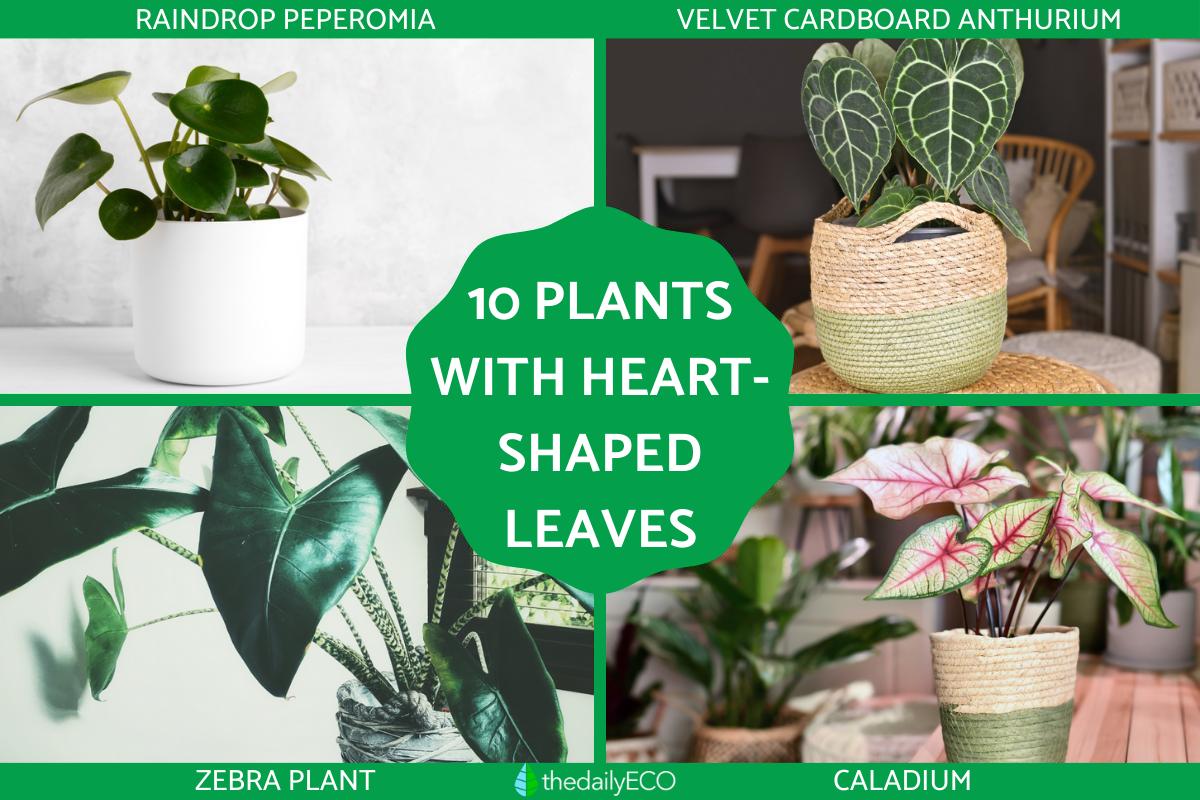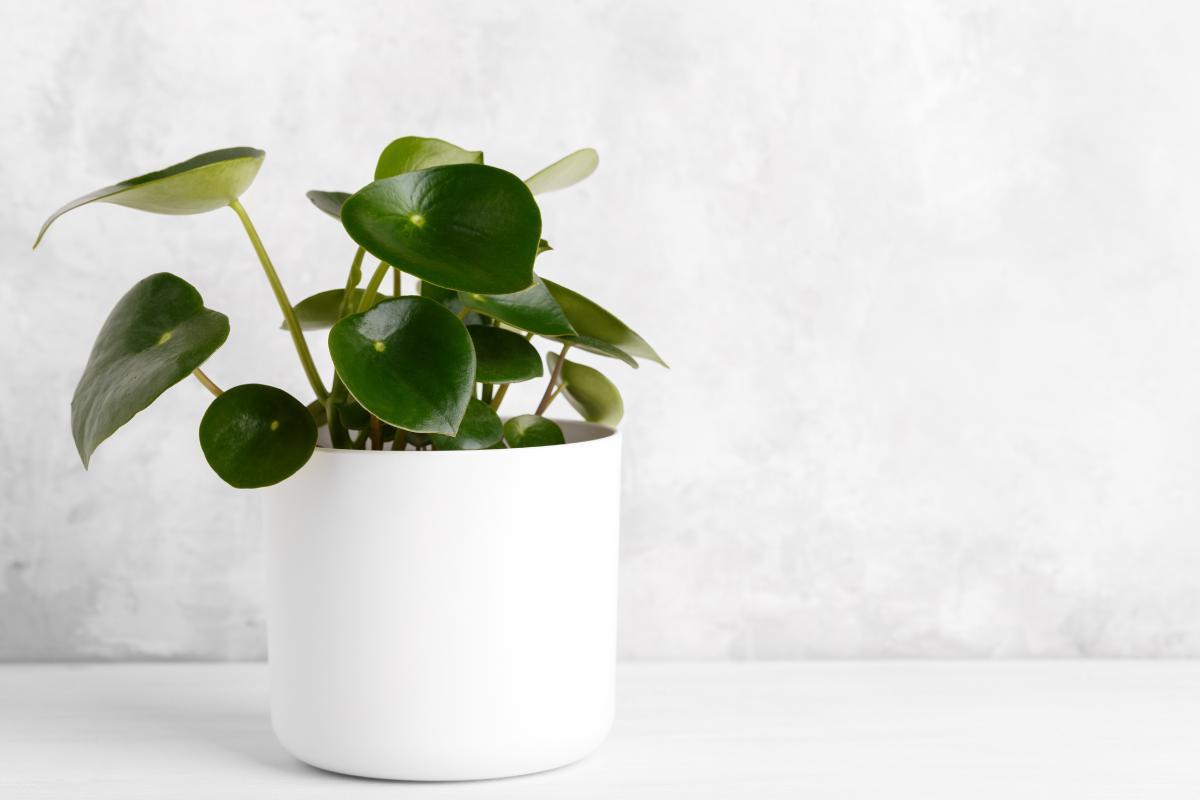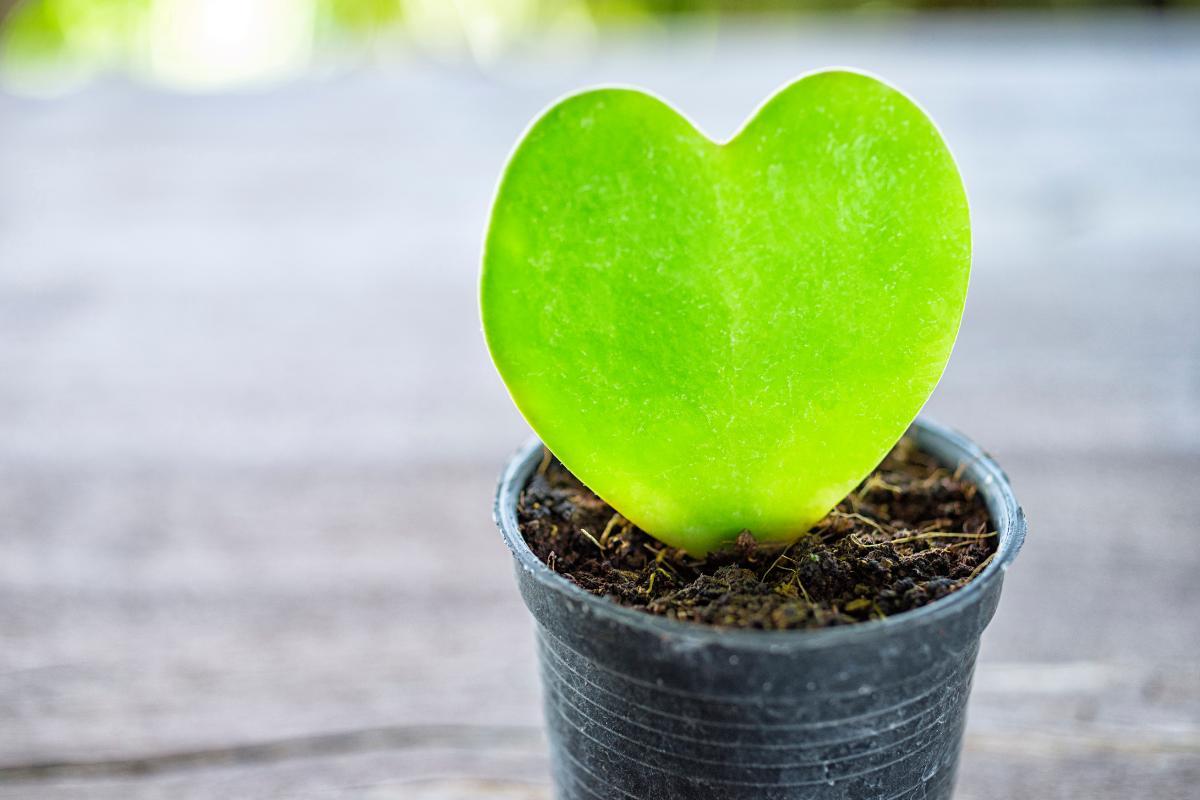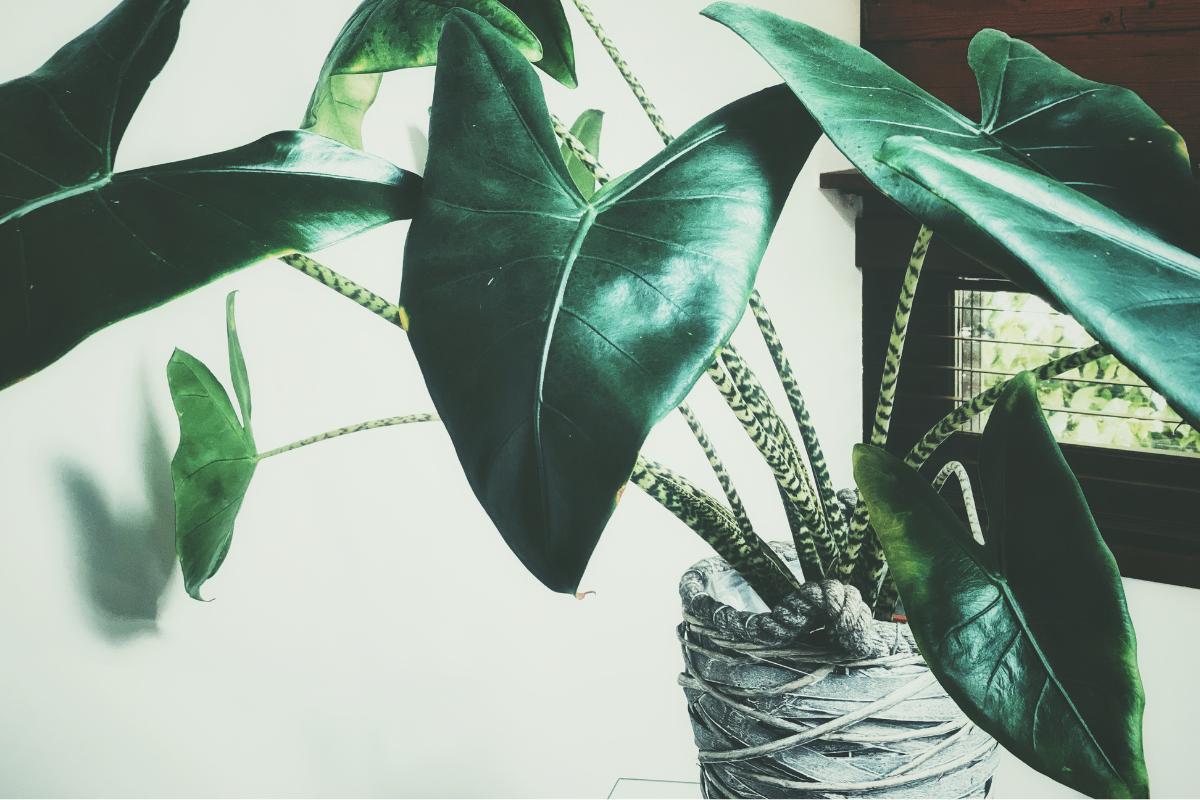Heart-Shaped Leaf Plants


Plants are categorized according to various criteria, such as their life cycle, reproductive methods and flowering. One of the most evident ways to classify plants is by their leaves. Plants with heart-shaped leaves are some of the most highly appreciated plant species in homes and gardens. Even when they are not in bloom, these plants are aesthetically very beautiful. Scientifically known as cordate leaves, heart-shaped leaves have a broad base which tapers at the tip to give this cardiac shape. At thedailyECO, we provide 10 heart-shaped leaf plants with photos to give you an idea of some of the species that bear these types of leaf.
- Raindrop peperomia (Peperomia polybotrya)
- Common morning glory (Ipomoea purpurea)
- Velvet cardboard anthurium (Anthurium clarinervium)
- Hoya hearts (Hoya kerrii)
- Zebra plant (Alocasia zebrina)
- Colocasia
- Cyclamen
- Heartleaf philodendron (Philodendron scandens)
- Ceropegia
- Elephant ear (Caladium)
Raindrop peperomia (Peperomia polybotrya)
The first heart-shaped leaf plant on our list has leaves which not only look like hearts, but are very thick and almost rubbery to the touch. Raindrop peperomia is an ornamental plant that can brighten up almost any home, although it needs to be keep in an environment that mimics the tropics.
Peperomia store water in their leaves, meaning they do not need too much irrigation. In some ways, it behaves similar to a succulent. We do not want to waterlog the soil, but it will need regular watering in hot weather. It is kept in pots, as can be seen in the photo below.
Discover true succulent plants with our article on types of echeveria succulent plants.

Common morning glory (Ipomoea purpurea)
Also known as purple morning glory, the common morning glory is an annual plant that can be invasive. Even being able to grow in the cracks of sidewalks, we need to be careful where we plant it. This is especially so when near agricultural crops as it has been known to take them over.
Despite the danger of becoming an invasive species, the common morning glory is a beautiful heart-shaped leaf plant in its own right. Its leaves range from blue to violet, although there are cultivars with even more color variations. Its seeds have a hallucinatory effect, but they are often treated with toxic compounds to discourage ingestion.
Check out other plants with bell-shaped flowers in our related article.

Velvet cardboard anthurium (Anthurium clarinervium)
Cardboard anthurium is one of the most sought after plants by both expert and novice gardener alike. Everyone wants to have an anthurium in their collection. Although it is considered an expensive plant, it can actually be propagated easily. With the new offshoots, you can sell them or give them as gifts for special occasions. They are known for their variegated heart-shaped leaves which look striking in white against the dark green base color.
Although you cannot see it in the photo, velvet cardboard anthurium has leaves which are soft and velvety to the touch. They are slightly toxic to pets such as cats or dogs. For this reason, we need to keep this plant out of their reach and be check for signs of poisoning if we see them trying to eat the leaves.

Hoya hearts (Hoya kerrii)
Perhaps it is the heart-leafed plant to rule all other plants with heart-shaped leaves. The leaves of the Hoya hearts are fleshy and thick, presenting in the shape of a green heart. It is a succulent native to Asia with a strong, woody stem. As shown in the photo, many gardeners prefer to keep it small, preferring to keep just a single leaf heart in the pot and trim others which might grow.
Another part of this plant's charm is the tiny star-shaped flowers that can bloom from it. It is easy to care for, as it requires little water and attention. If we let it grow as a vine, it can reach up to four meters in height. Its aged stems should not be cut, as they are capable of rejuvenating at any time.

Zebra plant (Alocasia zebrina)
Also known as zebrina alocasia, the zebra plant is known by this name not because its leaves are striped, but because the petiole which attaches them to the stalk is. The leaves are heart-shaped, although they are more pointed than most of the other plants on pour list.
The zebra plant is endemic to Asia, specifically to countries such as the Philippines, India and Malaysia. It is very distinguished, since it remains upright with a great bearing in any home environment. Its leaves present with great elegance. It requires a lot of light to grow beautifully, but not direct sun. Learn about other partial-shade plants that need plenty of light without direct sun.

Colocasia
Some plants with heart-shaped leaves are found in the genus Colocasia, including taro (Colocasia esculenta). These plants do well in the garden, since their leaves are large. It is very showy and dark green in color. It is a plant of tropical Asian origin. In India its leaves are edible, they cook them and stuff them with vegetables. The substrate in which we plant it should not be dry, but rather humid. It will grow abundantly with almost any fertilizer, but it is best to use organic homemade fertilizer when you can.

Cyclamen
The Cyclamen genus of flowers are sometimes known as sowbread. It has two great attractions, the bright green leaves with white veins and its incredible pink, red or white flowers. It forms bouquets of leaves and flowers in almost circular shapes.
Cyclamen should receive partial shade, but with a few hours of indirect sun each day. It does not tolerate heat or direct sun, with radiators or other forms of home heating often drying them out significantly. They bloom from February to June. The cyclamen is one of the longest-lived plants with heart-shaped leaves, often lasting as much as 20 years or more.
Discover more about how to take care of this plant with our article explaining why a cyclamen has yellow leaves.

Heartleaf philodendron (Philodendron scandens)
This type of philodendron is a climbing plant with the fact that its leaves are heart shaped providing its common name. It is great when placed in a hanging pot and letting it grow downwards freely, providing a spectacular look. The elongated heart-shaped leaves seen in the photo below can measure up to four inches long.

Ceropegia
If you are looking for a plant that is indoor only, the Ceropegia is a great option. It does not tolerate much light, so it will need to be kept in a dark corner of the home. The interior environment of our home may suit it perfectly, but we need to ensure it is kept away from any windows. It is a small vine that lives well in a pot. When its heart-shaped leaves and stems hang down, you can wrap them around itself again to make it look even more spectacular.

Elephant ear (Caladium)
Plants of the genus Caladium are often known as elephant ear plants or heart of Jesus plants. It is one of the most spectacular plants with heart-shaped leaves, especially when we consider its diverse species and cultivars. These cultivars have leaves with combined tones which contrast light and dark colors such as pink, red, burgundy, white and violet.
Now that you know the different types of heart-shaped plants you can grow in your garden, you may want to see what are classifications of plants there are. You can do so with our article on the different types of carnivorous plant.

If you want to read similar articles to Heart-Shaped Leaf Plants, we recommend you visit our Outdoor plants category.
- Silva, R. (1985). Basic gardening no. 1: plants and flowers. Chile: Andrés Bello, Martín Ávila, P. (2008). The Encyclopedia of Houseplants. Spain: Libsa.















